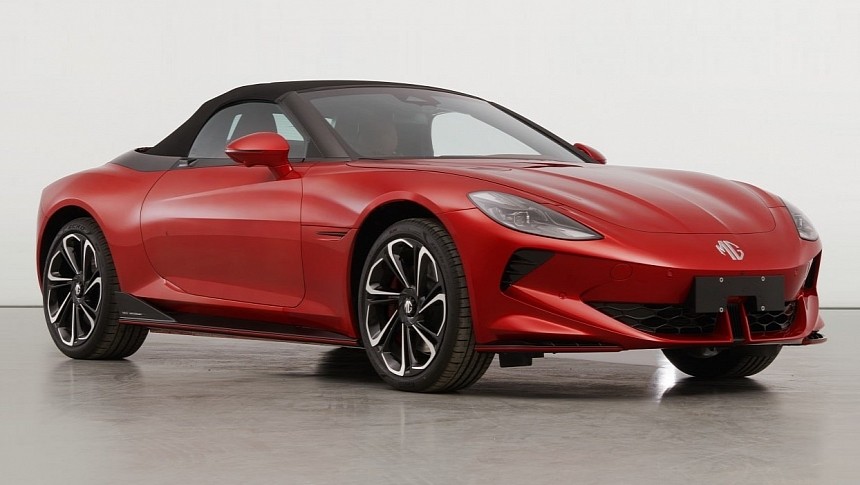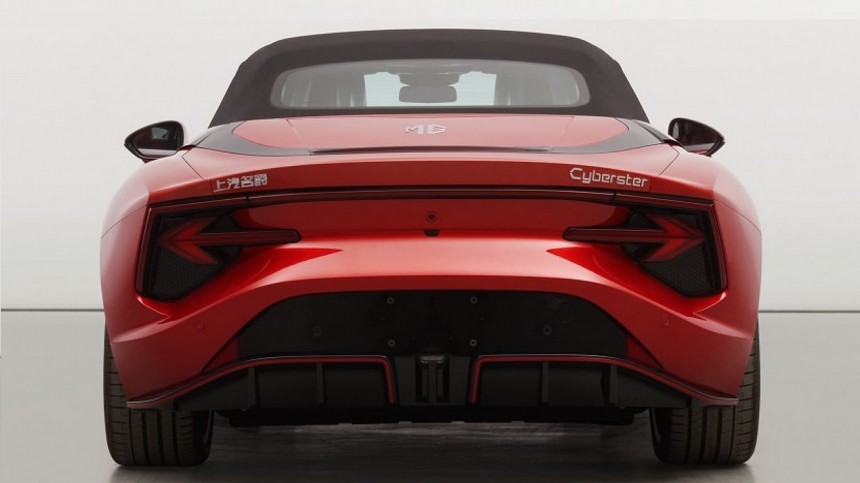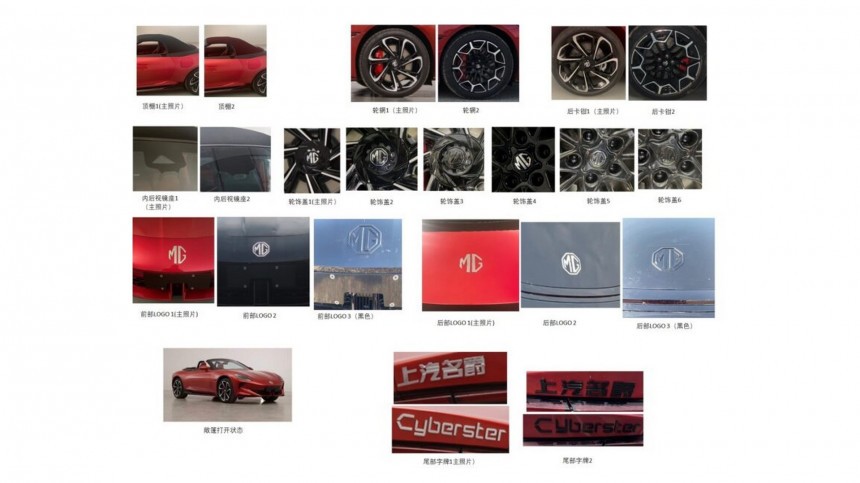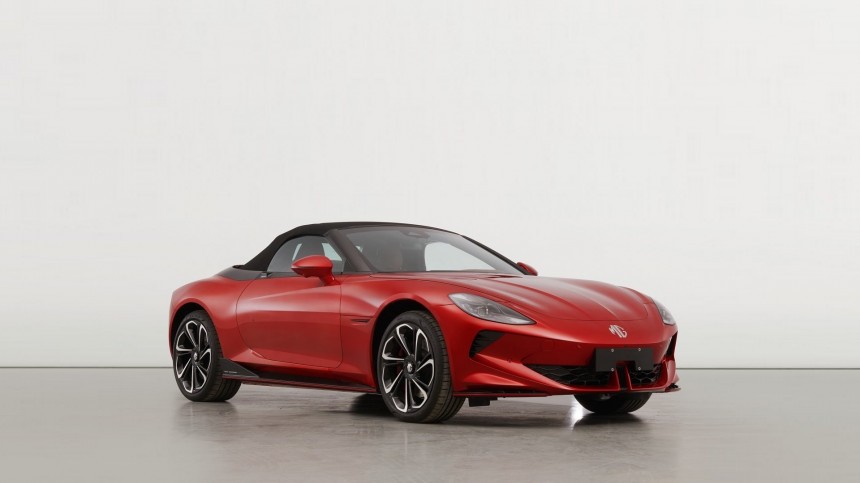Morris Garage was famous for its roadsters from the 1930s until its bankruptcy in April 2005. It had the T-Type Midget, the MGA, MGB, RV8, and finally, the MG F and MG TF, which saw MG go bankrupt. Now in the hands of SAIC, the once-British brand will soon reveal its latest roadster. Called Cyberster, it tries to remind us of its classic siblings, but you have to check its weight before deciding whether it really relates to an MGB – or any of the historic MG roadsters.
SAIC had to submit pictures and information about the new vehicle to the Chinese Ministry of Industry and Information Technology (MIIT). That is always a great source of anticipated data on all vehicles put for sale in the world's largest car market. With that help from the Chinese government, SAIC had to disclose the new roadster weighs a minimum of 1,850 kilograms (4,079 pounds).
To put that into the right perspective, a 1936 MG TA Midget tipped the scale at 770 kg (1,698 lb). A 1955 MG MGA 1500 Roadster weighed 914 kg (2,015 lb), while a 1962 MG MGB Roadster was slightly heavier: 920 kg (2,030 lb). Interestingly, the 1995 MG F (1,060 kg, or 2,337 lb) and the 2002 TF (1,095 kg, or 2,414 lb) were lighter than the 1992 RV8, which tipped the scale at 1,280 kg (2,822 lb). That shows that one of the heaviest roadsters from MG – if not the heaviest – was not even close to the Cyberster in terms of mass. But it gets worse: the new electric roadster can reach a maximum curb weight of 1,985 kg (4,376 lb).
It is quite fitting that such a vehicle emerges right in the middle of several discussions about BEV weight. The Insurance Institute for Highway Safety (IIHS) recently warned about how dangerous the added mass can be to other road users. From the very place where MG was born, the British Parking Association said old parking buildings might collapse if they have to hold a large number of BEVs. That shows how important it is for anyone willing to produce and sell electric cars powered by batteries to try to make them as efficient as possible.
The lighter a vehicle is, the fewer batteries it will need to have a reasonable range. Several companies are betting on the "dumb range" strategy, defined by Peter Rawlinson as adding as many cells as possible to a battery pack to have the most extended range attainable. That makes BEVs incredibly heavy, even more than MG's new electric roadster.
To be fair, the Cyberster is much larger than it seems. The new roadster is 4.54 meters (178.7 inches) long, 1.91 m (75.2 in) wide, 1.33 m (52.4 in) tall, and has a wheelbase of 2.69 m (105.9 in). The MG MGA is the closest one to the Cyberster in terms of length: 3.96 m (156 in). As you can see, the difference between them is almost half a meter, which is quite substantial. Anyway, the explanation for that much mass discrepancy is the battery pack, which MIIT did not disclose.
The good news is that we can estimate the capacity of this component. The MG4 EV has a 2.71-m (106.5-in) wheelbase, which is 2 cm (0.8 in) shorter than that of the Cyberster. Considering the largest battery pack available for the hatchback offers 64 kWh, the roadster can only store more electricity if it uses special cells – with higher energy density. If that were an option, SAIC could consider making the Cyberster lighter. That said, it is probably a 64-kWh unit or slightly smaller than that.
It would not be the only component the Chinese automaker would make these MG vehicles share. The electric hatchback uses the Modular Scalable Platform (MSP), and it is pretty likely that the Cyberster's underpinnings are the same. The front motor is already used by MG4 EV, and it delivers 150 kW (201 hp).
The Cyberster will have three motor options: two rear motors and an AWD derivative. The entry-level car will be powered by a 231-kW (310-hp) unit, while the intermediary derivative will have a 250-kW (335-hp) rear powertrain – used by the Rising Auto R7 and F7. Both will have a top speed limited to 193 kph (120 mph). The AWD roadster version can achieve 200 kph (124 mph). SAIC did not disclose how quickly this BEV can go from 0 to 100 kph (62 mph). If the MIIT does not demand that information, there is no point in disclosing it before the official premiere.
When SAIC finally presents the Cyberster, it will be entertaining to read our British colleagues' reviews of the electric roadster. Being this heavy, it will probably fail to impress on the narrow and winding roads in the United Kingdom. The low center of gravity may help make it a bit more fun, but will that be enough? Sadly, it would not have been a very different product had it been developed there instead of in China. As I wrote earlier, only new battery tech or a different development approach would make the Cyberster remotely close to the vehicles MG once sold.
To put that into the right perspective, a 1936 MG TA Midget tipped the scale at 770 kg (1,698 lb). A 1955 MG MGA 1500 Roadster weighed 914 kg (2,015 lb), while a 1962 MG MGB Roadster was slightly heavier: 920 kg (2,030 lb). Interestingly, the 1995 MG F (1,060 kg, or 2,337 lb) and the 2002 TF (1,095 kg, or 2,414 lb) were lighter than the 1992 RV8, which tipped the scale at 1,280 kg (2,822 lb). That shows that one of the heaviest roadsters from MG – if not the heaviest – was not even close to the Cyberster in terms of mass. But it gets worse: the new electric roadster can reach a maximum curb weight of 1,985 kg (4,376 lb).
The lighter a vehicle is, the fewer batteries it will need to have a reasonable range. Several companies are betting on the "dumb range" strategy, defined by Peter Rawlinson as adding as many cells as possible to a battery pack to have the most extended range attainable. That makes BEVs incredibly heavy, even more than MG's new electric roadster.
The good news is that we can estimate the capacity of this component. The MG4 EV has a 2.71-m (106.5-in) wheelbase, which is 2 cm (0.8 in) shorter than that of the Cyberster. Considering the largest battery pack available for the hatchback offers 64 kWh, the roadster can only store more electricity if it uses special cells – with higher energy density. If that were an option, SAIC could consider making the Cyberster lighter. That said, it is probably a 64-kWh unit or slightly smaller than that.
It would not be the only component the Chinese automaker would make these MG vehicles share. The electric hatchback uses the Modular Scalable Platform (MSP), and it is pretty likely that the Cyberster's underpinnings are the same. The front motor is already used by MG4 EV, and it delivers 150 kW (201 hp).
When SAIC finally presents the Cyberster, it will be entertaining to read our British colleagues' reviews of the electric roadster. Being this heavy, it will probably fail to impress on the narrow and winding roads in the United Kingdom. The low center of gravity may help make it a bit more fun, but will that be enough? Sadly, it would not have been a very different product had it been developed there instead of in China. As I wrote earlier, only new battery tech or a different development approach would make the Cyberster remotely close to the vehicles MG once sold.






















